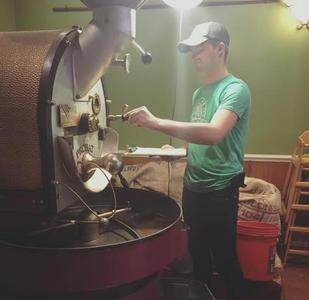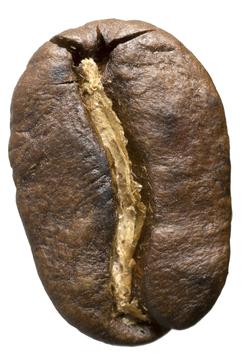We don't take roasting lightly. Buh dum chh.
|
Salem Roaster - "Ole Faithful"
Daleville Roaster - "Little Bit"
|
We know in order to serve an exceptional product we must understand in the inner workings of the coffee bean and the roasters we use. Our roasters have spent thousands of hours perfecting the art they love. Before a person is given the key to a roaster they must first go through some dirty work. No, seriously, they have to clean the roaster.
Roasting 101 begins with learning how to disassemble and clean the roaster. We clean our roasters in intervals: each roast, every other week, once a month, and every six months. Each of these intervals tackles different parts of the roaster, with varying levels of intensity. While learning to clean the roaster our trainee will shadow a more experienced roaster. Once the master roaster is confident the trainee understands the concepts he or she has set forth they will then be given an opportunity to put it into practice. After a few weeks of roasting with supervision an evaluation is given to determine a trainee's competence. If the evaluation is positive they are considered MMCT certified to roast! Roasting is not as simple as waiting a predetermined time and releasing the coffee. Each region will produce beans with similar roasting profiles, but a roaster must make decisions each time they fire up their machine. What profile do we want to serve in our store? At what roast is this bean in it's prime? Do I need to modify temperature more to achieve my goal? etc.. each new bean has to be researched and perfected through trial and error. Our roasting is still done by hand, not by computers. Our instruments are our five senses. The look of bean as its temperature increases, and watching the thermometer. The sound of the bean as it enters it's various stages of cracking. The smell of the gases released during the cracking phases. The feel of the bean after it is dropped to ensure proper cooling. Finally, the taste of the bean once it has degassed and can be brewed. All of our roasters are Probat L-12 Models. they vary in age from 20 years to under 10 years, the age can be seen by the patina each roaster wears. Each roaster is used every week in house to produce the coffee you may have in your hand at this very moment (if not, what are you waiting for?!). Enough about those mechanical beasts, lets talk beans.
have several ways of being done; depending on the region preferred methods vary. After the beans are dried they are sent to milling, the process of removing the now dehydrated outer husk. This step also has several methods of being done. Once the coffee is milled it is ready to be bagged and sold.
|





